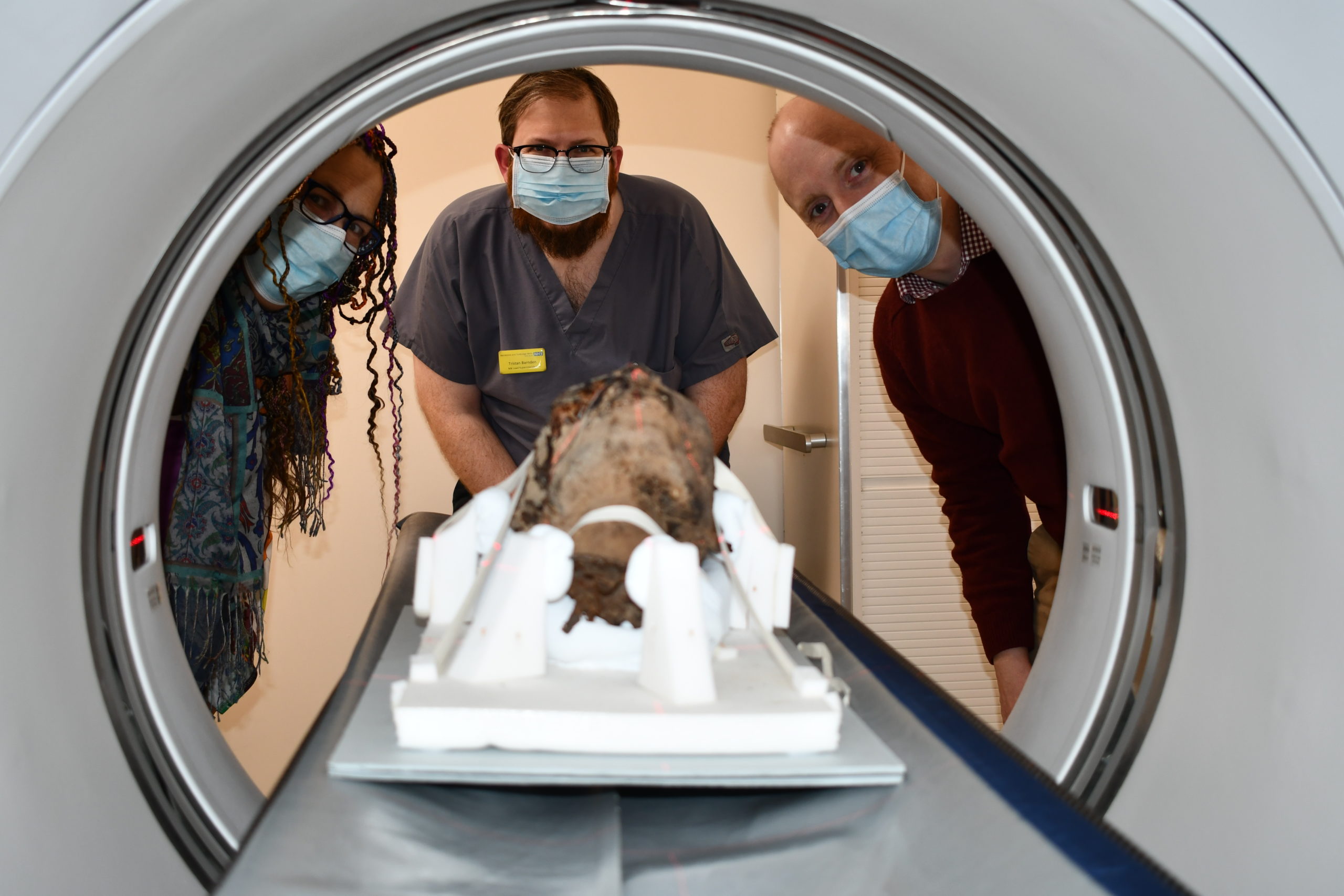
An ancient mummified Egyptian head has been examined using a computed tomography (CT) scanner at Maidstone Hospital revealing the hidden history inside.
Gifted in a glass case to the Canterbury Museums and Galleries collection, very little was known about the head. However, it was thought to have been brought to the UK from Egypt as a souvenir in the 19th century.
Initial x-rays undertaken at Canterbury Christ Church University suggested an adult female, however a more detailed CT scan was organised to learn more about the individual. Preliminary results from the scan indicate that the brain has been removed, the teeth are well worn down by a rough diet and that the tongue shows remarkable preservation.
The scan was led by James Elliott, Senior Radiographer at Maidstone and Tunbridge Wells NHS Trust and also Lecturer in Diagnostic Radiography at Canterbury Christ Church University.
James, who is an expert in forensic radiography with a background in archaeology, said: “The scan provides a huge amount of information – everything from dental status, pathologies, method of preservation as well as helping our estimations of age and sex. We now plan to use the scanning data to create a three-dimensional replica of the head and possible facial reconstruction to allow a more intensive study of it.”
James explained how mummification was ‘common practice’ within ancient Egypt but with the advancement of CT technology, more detail can be researched on ancient Egyptian traditions.
James continued: “Beginning in 3500 BC, mummification was seen as a way to safeguard the spirit in its journey to the afterlife. Ironically, the ancient Egyptians believed that a person’s mind was held in their heart and had little regard for the brain. Regardless of this, the brain was removed to help preservation of the individual.”
Craig Bowen, Canterbury Museums and Galleries Collections and Learning Manager, added: “This CT scanning is part of a larger aim to preserve the head and allow it to be displayed in conservation grade packaging for public viewing.”
Ritchie Chalmers, Chief of Service for Core Clinical Services, said: “It’s very exciting that Maidstone and Tunbridge Wells NHS Trust is involved with this project. It’s great to see how modern technology can help bring ancient history to life.”
